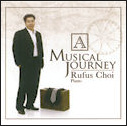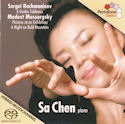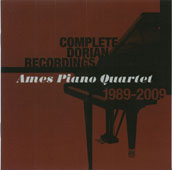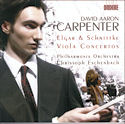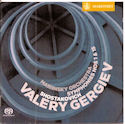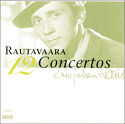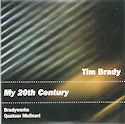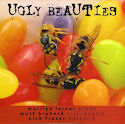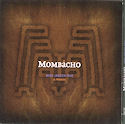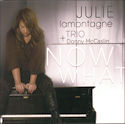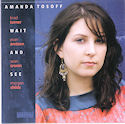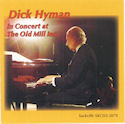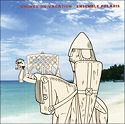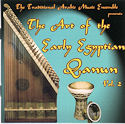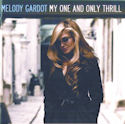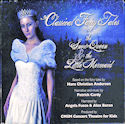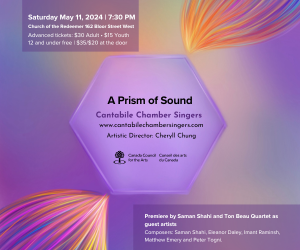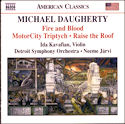 Michael Daugherty is an American composer, born in 1954, who writes fetching symphonic works that bear such names as Metropolis Symphony and Bizzaro, both once available on an Argo CD. Daugherty is not a towering figure in the pantheon of composers but his compositions are meticulously constructed, brilliantly scored and instantly pleasing, inviting repeated hearings. Daugherty was the Detroit Symphony’s Composer-in-Residence for four years and Naxos has issued three works recorded during public performances given by the Detroit Symphony under Neeme Järvi (Naxos 8.559372). The opening work, a violin concerto, Fire and Blood (2003), is a cross between Leroy Anderson and John Williams. This attractive, light classical opus was inspired by the murals of Diego Rivera in the Detroit Institute for the Arts. The soloist in this premier performance is Ida Kavafian. Next comes MotorCity Triptych (2000) followed by Raise the Roof (2003) scored for tympani and orchestra. All three works are vibrantly orchestrated and in these performances, dating from 2001 and 2003. Everyone involved seems to be having a good time.
Michael Daugherty is an American composer, born in 1954, who writes fetching symphonic works that bear such names as Metropolis Symphony and Bizzaro, both once available on an Argo CD. Daugherty is not a towering figure in the pantheon of composers but his compositions are meticulously constructed, brilliantly scored and instantly pleasing, inviting repeated hearings. Daugherty was the Detroit Symphony’s Composer-in-Residence for four years and Naxos has issued three works recorded during public performances given by the Detroit Symphony under Neeme Järvi (Naxos 8.559372). The opening work, a violin concerto, Fire and Blood (2003), is a cross between Leroy Anderson and John Williams. This attractive, light classical opus was inspired by the murals of Diego Rivera in the Detroit Institute for the Arts. The soloist in this premier performance is Ida Kavafian. Next comes MotorCity Triptych (2000) followed by Raise the Roof (2003) scored for tympani and orchestra. All three works are vibrantly orchestrated and in these performances, dating from 2001 and 2003. Everyone involved seems to be having a good time.

@Grigorian.Com
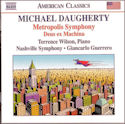 Here is an ideal place to alert collectors to a new Daugherty CD that returns Metropolis Symphony to the catalogue in a brand new performance by the Nashville Orchestra conducted by Giancarlo Guerrero (Naxos 8.559635). The five movement piece, inspired by the Superman comic strip is tour-de-force for orchestra and a challenge for conductor and engineer alike to keep the instrumental balances intact and yet have every voice heard. How well they succeed is demonstrated in the first movement, Lex, an exhilarating moto perpetuo, the like of which you’ve never heard before. In fact, when I first heard the Zinman/Baltimore version on Argo some 15 years ago I thought that “Lex” referred to Lexington Avenue (who reads liner notes!) and it fitted perfectly... the non-stop, inexhaustible pulse of the city, the hustle and bustle of people and machines punctuated by police whistles from all directions. Krypton; MXYZPTIK; Oh, Lois!; and the Red Cape Tango follow. The Red Cape Tango is a whimsical set of treatments of the Dies Irae to a tango rhythm. On the same disc and new to the catalogue is Deus ex Machina, a piano concerto inspired by trains of the past and the future written in 2007. All this benefits from a state-of-the-art recording. Recommended to all except music lovers with hang-ups.
Here is an ideal place to alert collectors to a new Daugherty CD that returns Metropolis Symphony to the catalogue in a brand new performance by the Nashville Orchestra conducted by Giancarlo Guerrero (Naxos 8.559635). The five movement piece, inspired by the Superman comic strip is tour-de-force for orchestra and a challenge for conductor and engineer alike to keep the instrumental balances intact and yet have every voice heard. How well they succeed is demonstrated in the first movement, Lex, an exhilarating moto perpetuo, the like of which you’ve never heard before. In fact, when I first heard the Zinman/Baltimore version on Argo some 15 years ago I thought that “Lex” referred to Lexington Avenue (who reads liner notes!) and it fitted perfectly... the non-stop, inexhaustible pulse of the city, the hustle and bustle of people and machines punctuated by police whistles from all directions. Krypton; MXYZPTIK; Oh, Lois!; and the Red Cape Tango follow. The Red Cape Tango is a whimsical set of treatments of the Dies Irae to a tango rhythm. On the same disc and new to the catalogue is Deus ex Machina, a piano concerto inspired by trains of the past and the future written in 2007. All this benefits from a state-of-the-art recording. Recommended to all except music lovers with hang-ups.

@Grigorian.Com
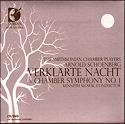 Verklärte Nacht, Transfigured Night, is Schoenberg’s most often performed work. And so it should be, whether heard as the original string sextet or in the composer’s arrangement for orchestra. In 1996 Deutsch Harmonia Mundi issued a fascinating CD, now deleted, entitled “Transfiguration” which included Verklärte Nacht played by the Smithsonian Chamber Players led by cellist Kenneth Slowik. There is no more impeccable, ardent and probing recorded performance, be it sextet or orchestra, than this sextet version. Now a new performance by Kenneth Slowik and the Smithsonian Chamber Players featuring an all Schoenberg program is available on a two disc set from Dorian Sono Luminus (DSL-90909, CD+DVD). As expected, the playing is exemplary in the brand new recording of the sextet followed by Chamber Symphony No.1, opus 9 played by the 15 member chamber orchestra under Slowik’s direction. The second disc is a fascinating and informative DVD with films exploring the origin of Verklärte Nacht, contemporary influences and appreciations of the work by distinguished musicians and heads of associated institutions; also its place in the arts’ world of the fin-de-siècle, concluding with a video of the CD performance. The image of the performance is in a sort of sepia-toned color film, softly focused. Bonuses include the origins of the Smithsonian and the Schoenberg Library and its present disposition. The packaging includes the text and translation of Richard Dehmel’s poem Verklärte Nacht and the name of each of the instrumentalists and DVD participants but is otherwise lacking in program notes and recording dates. Also the timings quoted for the two works are transposed. Nevertheless, highly recommended.
Verklärte Nacht, Transfigured Night, is Schoenberg’s most often performed work. And so it should be, whether heard as the original string sextet or in the composer’s arrangement for orchestra. In 1996 Deutsch Harmonia Mundi issued a fascinating CD, now deleted, entitled “Transfiguration” which included Verklärte Nacht played by the Smithsonian Chamber Players led by cellist Kenneth Slowik. There is no more impeccable, ardent and probing recorded performance, be it sextet or orchestra, than this sextet version. Now a new performance by Kenneth Slowik and the Smithsonian Chamber Players featuring an all Schoenberg program is available on a two disc set from Dorian Sono Luminus (DSL-90909, CD+DVD). As expected, the playing is exemplary in the brand new recording of the sextet followed by Chamber Symphony No.1, opus 9 played by the 15 member chamber orchestra under Slowik’s direction. The second disc is a fascinating and informative DVD with films exploring the origin of Verklärte Nacht, contemporary influences and appreciations of the work by distinguished musicians and heads of associated institutions; also its place in the arts’ world of the fin-de-siècle, concluding with a video of the CD performance. The image of the performance is in a sort of sepia-toned color film, softly focused. Bonuses include the origins of the Smithsonian and the Schoenberg Library and its present disposition. The packaging includes the text and translation of Richard Dehmel’s poem Verklärte Nacht and the name of each of the instrumentalists and DVD participants but is otherwise lacking in program notes and recording dates. Also the timings quoted for the two works are transposed. Nevertheless, highly recommended.
An earlier Smithsonian Chamber Players under Kenneth Slowik recording of interest is the Schoenberg/Rainer Riehn transcription of Mahler’s Das Lied von der Erde, recorded in 2007 in Quebec. This outstanding performance and recording documents the collaboration of Smithsonians and The Santa Fe Pro Musica and features Russell Braun and John Elwes (DOR 90322).
Finally, there is a 92 minute video portrait of Herbert von Karajan that shows the iconic conductor, warts and all (DG DVD 0734392). KARAJAN, a film by Robert Dornhelm, proves to be the most interesting, informative and thorough of the many Karajan DVD biographies. Here are historic films, interviews with colleagues, commenting on the many facets of conductor’s career from his rise to his final days and death. We hear from Solti, Schwarzkopf, Mutter, Ozawa, Janowitz, Kollo, Ludwig, Rattle, Thiemann, and others. There are many rehearsals, always serious but sometimes making his point with humour. The production ends with a falcon high in the air over the mountains. Although it is not mentioned here, Karajan once said that he wished to “come back” as a falcon. Highly recommended to those interested in the subject.
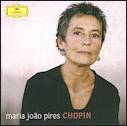 Chopin
Chopin![]()


